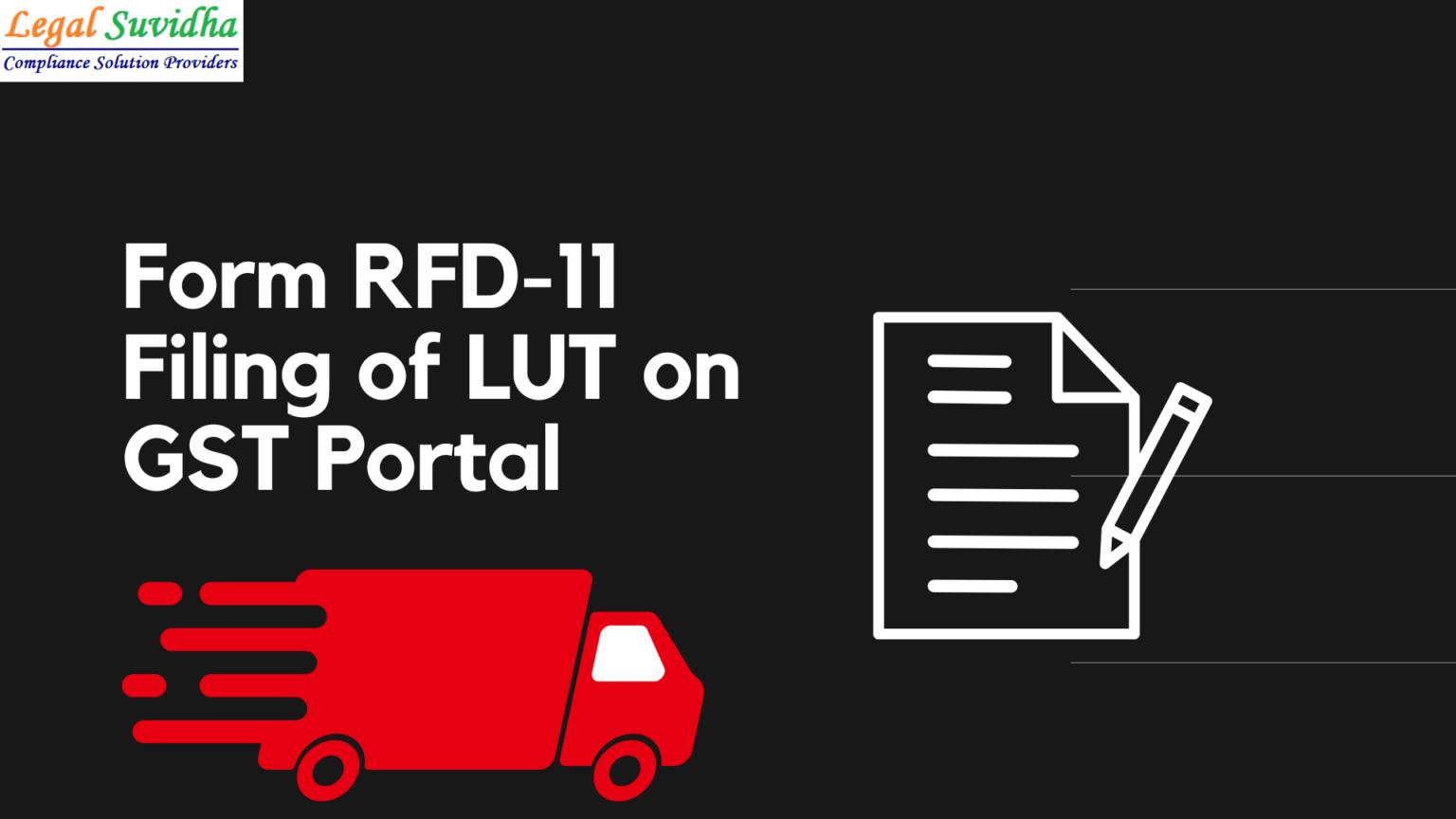FORM RFD 11: FILING OF LUT UNDER GST
A Letter of Undertaking (LUT) is a legal document that is required to be submitted by certain taxpayers under the Goods and Services Tax (GST) law in India. LUT is a declaration by a registered person that they will follow all GST compliance regulations and will not claim any input tax credit.
LUT is mandatory for taxpayers who are exporting goods or services and are not paying GST on the same, as per the GST Act. It is a self-declaration and does not require any certification from any Chartered Accountant or Cost Accountant.
The LUT is valid for one financial year and it has to be submitted before the start of the financial year for which it is being submitted. The LUT must be filed in Form GST RFD-11, and it’s important that the LUT must be valid for the entire financial year for which it is filed.
It’s worth noting that LUT is a serious declaration and non-compliance with the terms of the LUT will lead to revocation of LUT, and the exporter will be liable to pay tax, interest, and penalties as applicable. Therefore, it is recommended to consult with a tax professional to ensure that the LUT is filed correctly and the compliance is me.
When to file a LUT?
A Letter of Undertaking (LUT) is required to be filed by certain taxpayers under the Goods and Services Tax (GST) law in India when they are exporting goods or services and are not paying GST on the same.
An exporter can file a LUT before the start of the financial year, for which he wants to claim the benefit of zero-rating of supplies. LUT is valid for one financial year, therefore exporters need to file LUT before the start of each financial year.
It’s worth noting that if the exporter wants to claim the benefit of zero-rating of supplies in the middle of the financial year, he will have to file LUT again and submit the same before making zero-rated supplies.
It’s important to consult with a tax professional or local tax authorities to ensure that the LUT is filed correctly and that compliance is met. Non-compliance with the terms of the LUT will lead to revocation of LUT, and the exporter will be liable to pay tax, interest, and penalties as applicable.
Who is required to submit LUT using GST RFD-11?
All GST-registered exporters of goods and services must file a GST LUT. Exporters who have been charged with a crime or committed tax evasions totaling more than Rs 250 lakhs under the CGST Act, the Integrated Goods, and Services Act of 2017, or any other applicable legislation are ineligible to submit a GST LUT. They would need to provide an export bond in these circumstances.
In this case, the government wanted to increase the export base by granting export subsidies. Any registered person may submit an export bond or LUT in GST RFD 11 in accordance with the CGST Rules, 2017 without having to pay the integrated tax.
They may apply for LUT if, they are GST-registered and plan to provide goods or services to India, other countries, or SEZs. They want to sell goods without having to pay the incorporated tax.
What are the required documents to file LUT under GST?
To file a Letter of Undertaking (LUT) under the Goods and Services Tax (GST) law in India, the following documents are generally required:
- PAN card: A copy of the PAN card of the registered person filing the LUT.
- GST registration certificate: A copy of the GST registration certificate of the registered person filing the LUT.
- Bank account details: A copy of the bank account statement or canceled cheque showing the name of the account holder, account number, and IFSC code.
- Form GST RFD-11: A duly filled and signed Form GST RFD-11, which is the official form for filing a LUT.
- Self Declaration: A self-declaration in the format specified in the GST RFD-11.
- Shipping bill or Bill of export: Copy of the shipping bill or bill of export, as the case may be, for the export of goods or services, on the basis of which the claim of zero-rating is being made.
It’s worth noting that the required documents may vary depending on the specific circumstances and the jurisdiction, so it is advisable to check with local tax authorities or a tax professional for more information.
It is important that all the documents should be accurate and complete, as any discrepancy in the information provided may lead to rejection of the LUT.
Submission of a Letter of Undertaking (FORM GST RFD-11):
The Letter of Undertaking (LUT) is filed in Form GST RFD-11, which is available on the official GST portal. The form should be filled out and submitted online, along with the required documents.
The following are the steps to file a LUT in Form GST RFD-11:
- Log in to the GST portal: Go to the official GST portal and log in with your GST credentials.
- Select the appropriate form: Navigate to the Services > User Services > Bonds and LUTs > LUTs.
- Fill in the form: Carefully fill in all the details required in the form, including your GST registration number, bank account details, and self-declaration.
- Upload the required documents: Upload the required documents such as PAN card, GST registration certificate, bank account statement or canceled cheque, and self-declaration.
- Submit the form: Once all the details have been entered and the required documents have been uploaded, submit the form.
- Acknowledge the submission: You will receive an acknowledgment receipt upon successful submission of the form.
It’s important to ensure that the information provided in the form is accurate and complete and that all the required documents are uploaded before submitting the form.
It’s also worth noting that the LUT is valid for one financial year, and it must be filed before the start of each financial year for which the benefit of zero-rated supplies is claimed. It’s always advisable to check with local tax authorities or a tax professional for specific guidance regarding LUT.




















